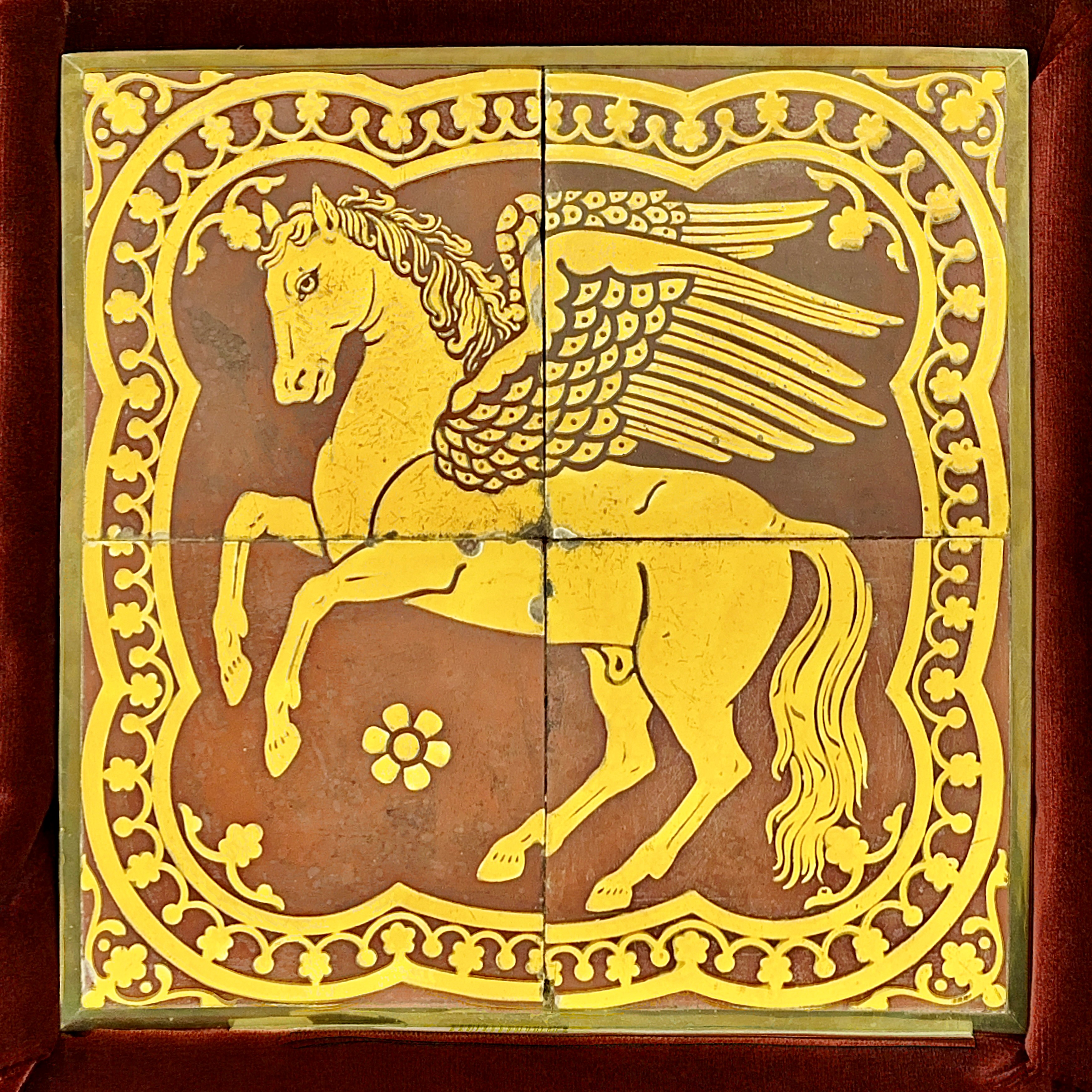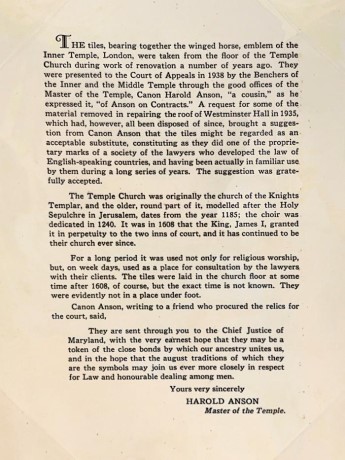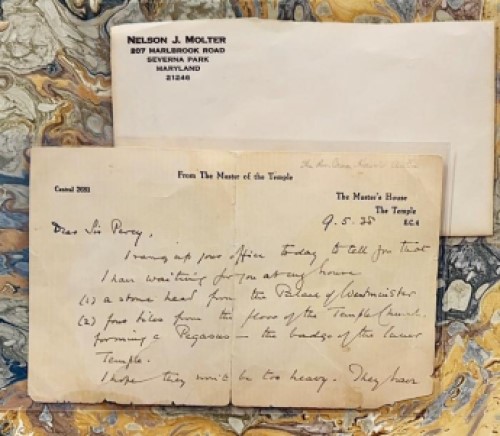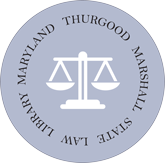
The Pegasus is the emblem of the Inner Temple. To become a barrister in England and Wales, one must be a member of an Inn of Court. There are four options: Gray's Inn, the Inner Temple, Lincoln's Inn, and the Middle Temple. The Inner Temple and Middle Temple share an ancient building called the Temple Church. The tiles pictured above were removed from the Temple Church during a renovation. The text of the accompanying letter indicates that the tiles were given in 1938 as a gift.

THE tiles, bearing together the winged horse, emblem of the Inner Temple, London, were taken from the floor of the Temple Church during work of renovation a number of years ago. They were presented to the Court of Appeals in 1938 by the Benchers of the Inner and the Middle Temple through the good offices of the Master of the Temple, Canon Harold Anson, "a cousin," as he expressed it, "of Anson on Contracts." A request for some of the material removed in repairing the roof of Westminster Hall in 1935, which had, however, all been disposed of since, brought a suggestion from Canon Anson that the tiles might be regarded as an acceptable substitute, constituting as they did one of the proprietary marks of a society of the lawyers who developed the law of English-speaking countries, and having been actually in familiar use by them during a long series of years. The suggestion was gratefully accepted.
The Temple Church was originally the church of the Knights Templar, and the older, round part of it, modelled after the Holy Sepulchre in Jerusalem, dates from the year 1185; the choir was dedicated in 1240. It was in 1608 that the King, James I, granted it in perpetuity to the two inns of court, and it has continued to be their church ever since.

For a long period it was used not only for religious worship, but, on week days, used as a place for consultation by the lawyers with their clients. The tiles were laid in the church floor at some time after 1608, of course, but the exact time is not known. They were evidently not in a place under foot.
They are sent through you to the Chief Justice of Maryland, with the very earnest hope that they may be a token of the close bonds by which our ancestry unites us, and in the hope that the august traditions of which they are the symbols may join us ever more closely in respect for Law and honourable dealing among men.
Yours very sincerely
HAROLD ANSON
Master of the Temple.

